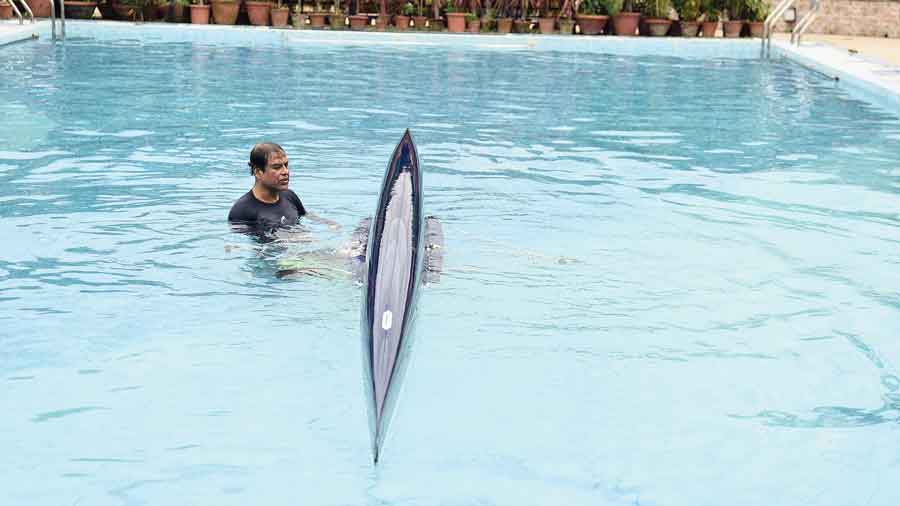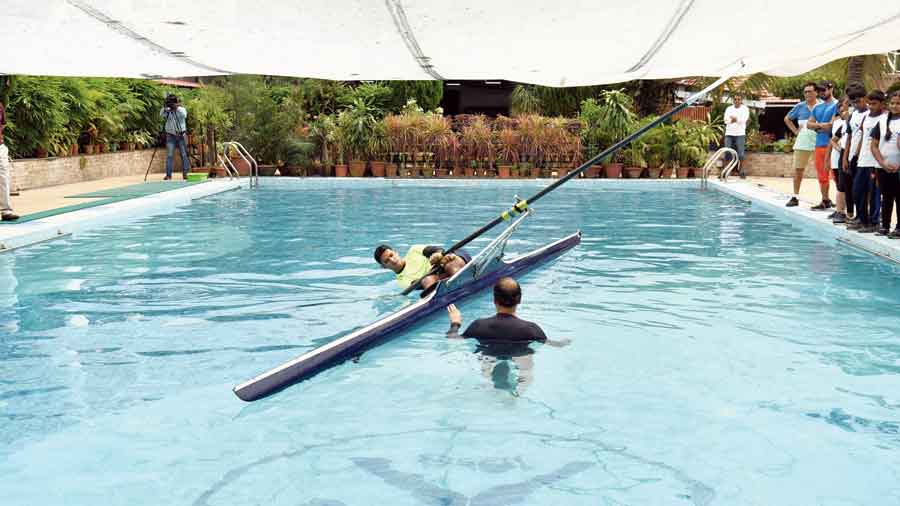About 30 rowers of Calcutta Rowing Club (CRC), in the Rabindra Sarobar complex, were on Sunday given a demonstration of how to survive if their boat capsizes. They were shown how to release oneself from an upside-down boat, get back on a boat and reach the bank.
The training was organised after Kolkata police issued a standard operating procedure (SOP) for all rowing clubs in the Sarobar. Two teenage rowers had drowned in the Sarobar on May 21 during a fierce storm. Rowing
activities have since been suspended in the Sarobar waters. Sib Sankar Basu, a FISA level II coach, showed the trainees some videos and images before making a presentation. He then went down into the swimming pool of the club with a boat and an assistant to demonstrate how to handle an adverse situation.
The Telegraph witnessed the session

The boat is now upside down and the rower is completely under water. Basu says the rower should not breathe now. “The first target of the rower should be to release the feet from the shoes. Hold your breath and release your feet,” he says. Rowers should try to break the surface after releasing their feet.

With the feet free and head above the surface of the water, rowers should reach for their boat. Rowing boats never sink. “If a boat capsizes, always try to hold onto your boat as this will help you stay afloat,” says Basu. Rowers have to remain afloat by holding onto the boat till a rescue boat arrives.

One of the components of a boat that rowers should check is the rigger (in picture). A rigger is a square compartment through which the oar passes. A movable handle (which is open in the picture) locks the compartment preventing the oar from slipping out of its position. Basu said all rowers should check their boats before they start their training or regatta. He said the rowers should check if the rigger is properly locked. “If the rigger is loose, the oar can slip off a rower’s hand. This should not happen,” he said.
Pictures by Gautam Bose






